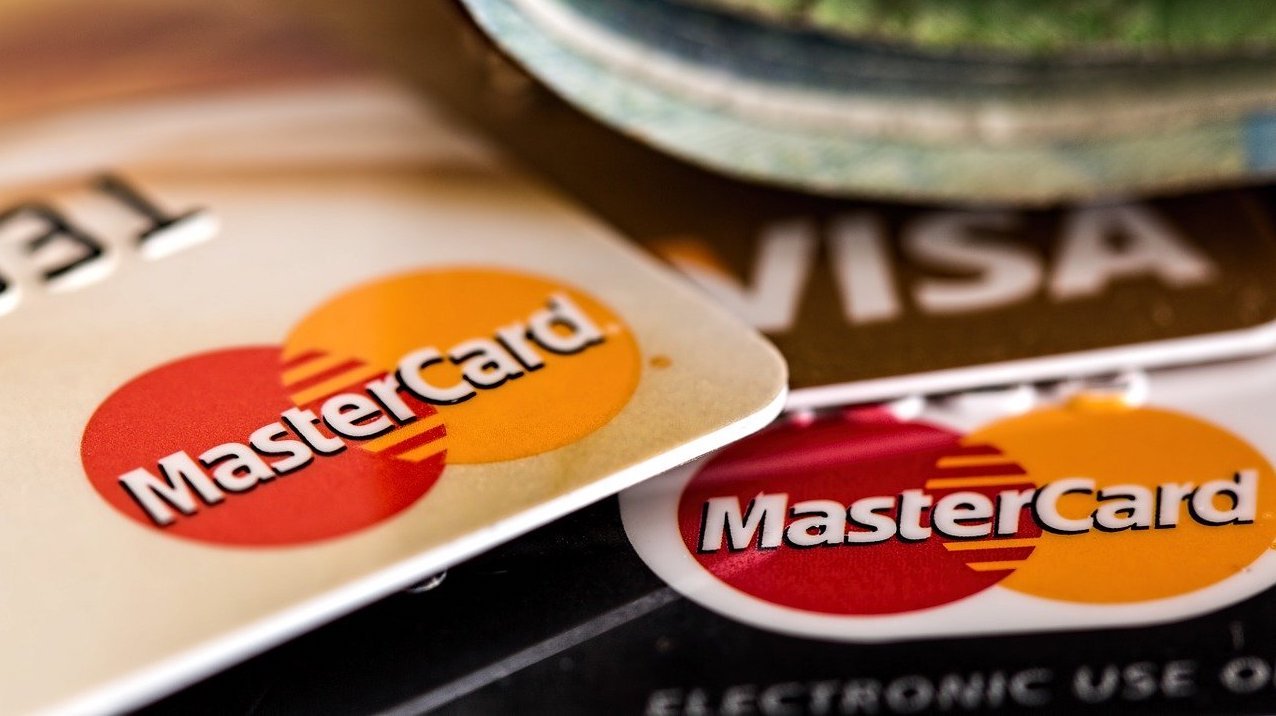Dive into the lesser-known aspects of credit cards, where fine print hides secrets and practices that may surprise you. We’ve found significant credit card secrets, from misleading terms to the true impact of rewards programs. Uncover what companies prefer to keep under wraps and arm yourself with knowledge to better navigate the credit card landscape.
1. Think You Have a Fixed Rate? Not So Fast
If you’re like most holders, one of the first details you pay attention to when considering a card is the APR, or annual percentage rate of charge.
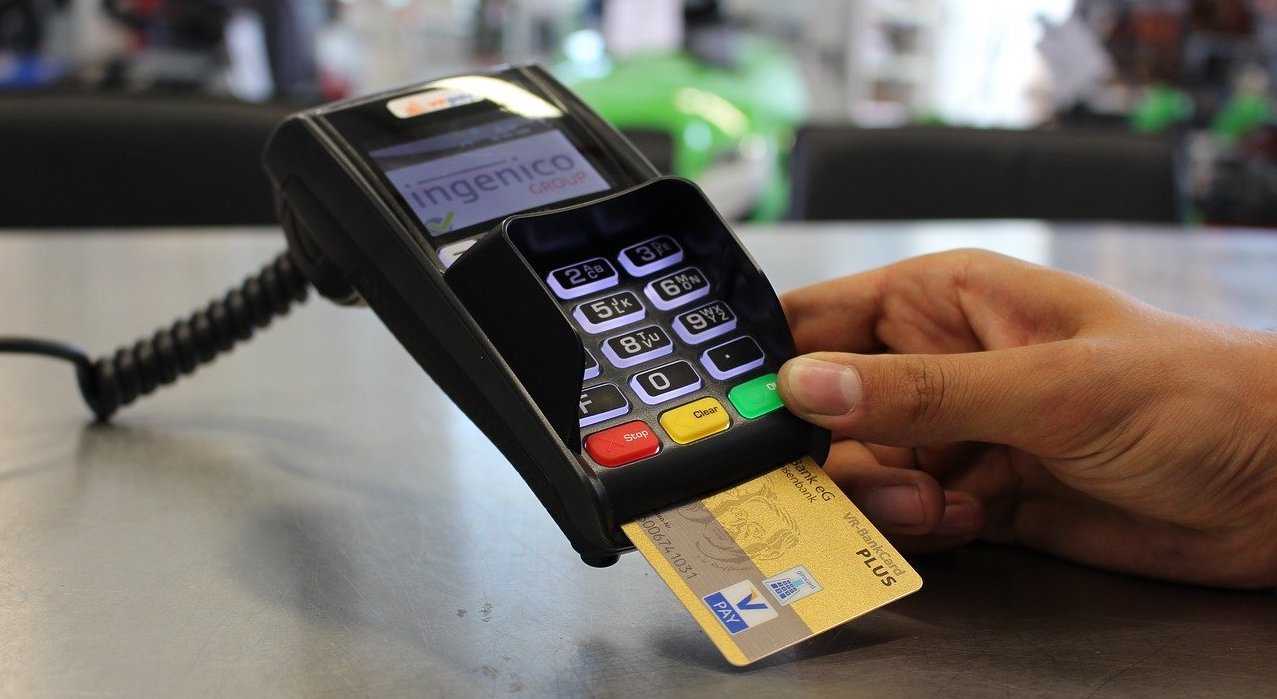
Your APR is the interest rate you pay to use credit – cash that doesn’t belong to you and that you are, essentially, borrowing. Rates can be fixed or variable.
Credit companies often tell consumers that a fixed rate doesn’t change, while a variable rate does. The thing is, this description is deceptively simplistic. The real difference between a fixed rate and a variable rate is that a fixed rate isn’t directly tied to another benchmark, and a variable rate is.
The index or benchmark on which a variable rate is based changes periodically, and that rate rises or drops in conjunction with that index rate.
A fixed rate may not fluctuate like a variable rate, but it’s not carved in stone, either. In fact, your “fixed” rate is subject to change anytime at the creditor’s discretion. Note that the prime rate is the rate that the best customers get. So, there’s a good chance that you aren’t getting a prime rate to start with.
If you carefully pore over the small print of your card terms – and most consumers don’t – you’ll notice the detail that issuers want you to overlook. They have the right to bump up your APR at any time, as long as they give you formal notice as required by law.
The only time they are not permitted to do this is within the first 12 months you open a credit account – and only if the initial rate was not a promotional introductory offer and you make your deposits on time.
Prior to the 2009 passing of the Credit Card Accountability Responsibility and Disclosure (CARD) Act, credit companies only had to give consumers 15 days’ notice. That’s right – you didn’t even have a whole billing cycle to get your account in order before your APR went up.
Now, at least, card issuers have to give you 45 days’ notice. If you’re carrying a considerable balance, though, that 45 days may not be enough to save you from the consequences of a big rate bump before the due date.
Credit companies usually notify their consumers of a rate increase by post. So, if you’re behind on going through your snail mail, you could find an unwanted surprise in the form of a much higher interest charge on your next bill.
2. Your Card Company Can Legally Charge Whatever Rate It Wants
Since laws like the Credit CARD Act regulate how much notice a credit company must give the consumer before raising rates, you may expect federal regulations to limit how high an interest rate can go, too. You would be wrong.

In fact, because the federal government places no caps on APR percentages, companies have started using APR hikes as a credit loophole to charge consumers more after regulations limit other credit terms. For example, the Act restricted the amount of annual fees an issuer can charge to 25 percent of the credit limit on the account.
One national bank, First Premier Bank, responded to the new law’s passage by lowering annual fees to comply with the law but raising rates to an unbelievable 79.9 percent APR.
More than half of states in the U.S. have some form of state-level regulations in place that do limit rates on loans. Called usury laws, these regulations vary significantly across state lines. However, no matter what state you live in, you can’t count on usury laws to help you get a lower rate.
Under a Supreme Court ruling that dates back to 1978 (Marquette National Bank of Minneapolis vs. First of Omaha Service Corp), national banks and card companies can charge consumers in any state at any rate that is legal in the state where the company is headquartered.
All credit companies have to do to be able to charge rates at unlimited percentage rates is establish their business in a state without usury laws or with more lenient usury laws.
Since federal laws like the Act won’t protect you from cards with high interest rates, you must research before signing a contract with a creditor. Compare rates from competing banks and choose a card that meets your needs while offering a reasonable rate. Don’t treat your credit as free cash.
If possible, use your card only to buy items that you would have been willing to purchase with your own cash.
Although credit companies are in the business of making money, they also need to offer enough value that you’re willing to open an account with them. If they charge excessively high rates, card companies will have a hard time finding enough consumers willing to take their offer of credit to stay in business.
3. A “No Limit” Card Doesn’t Mean What You Think It Means
You might be in for a surprise if you’ve got a “no limit” card in your wallet. That’s because many of these cards actually do have limits – just not advertised ones.

The lines of credit that are often offered at “no limit” really mean no preset limit. It may make you feel good to be qualified for (supposedly) unlimited spending, but the reality is that no company is going to write you a blank check of a loan, whether attached to a card or not.
So, how does a card with no preset limit work? First, they’re usually offered by invitation only to consumers with exceptional credit (so kudos to you for landing an invitation into this exclusive club, even if your credit isn’t unlimited). Often, these accounts also come with annual fees in the hundreds, or even thousands, of dollars.
If you get your hands on one of these fancy cards, the company issuing the card decides your limit based on your circumstances. These circumstances include:
- your credit history
- income
- prior balances
- History of remittances made
- the length of time you’ve had the account open
One downside to having a no-limit card is that you could go over your limit without even realizing it, since you don’t know what the limit is. This could lead to mortifying purchase declines and the hassle of figuring out alternative remittance arrangements.
4. Card Rewards Aren’t as Rewarding as Creditors Want You to Think
Perks and rewards are great, but they’re not the game-changers card companies make them out to be.

Let’s start with the good – because getting rewarded for buying the things you would have purchased anyway is pretty sweet.
A credit rewards program gives you something back for actively using your card. Depending on your card’s rewards program, you may have different options for redeeming those rewards. Some of the ways you may be able to use card rewards include:
- Cash back in the form of a check or direct deposit into your bank account
- A statement credit toward your account balance
- Travel credit or vouchers, such as airline miles
- Gift cards to all kinds of online and brick and mortar retail stores, restaurants and other businesses
- Charitable contributions to nonprofit causes
- Deposits towards a mortgage or student loan debt
Used strategically and over a long period of time, your credit points can help you achieve a better financial position. Paying off your student debt early and making extra mortgage remittances to cut down on the considerable interest cost that can accrue over 15 to 30 years are lofty goals for card rewards, but it’s also true that every little bit helps in the context of these larger debts.
Even if you use your card rewards to offset regular purchases, you can save a little more cash (and, hopefully, use it wisely).
The problem is that creditors try to suck you in with the promise of rewards, but what they don’t tell you is that getting any real benefit from those rewards takes time. Outside of the introductory promotional offers (more on those later), you can usually expect one credit point to be worth about one cent, although the precise amount varies by the method you choose to redeem your rewards.
If you’ve got a card that gives you one point per dollar you spend, you’re getting back just one penny on every dollar. Sure, it’s a penny you didn’t have before – but if you’re paying annual fees or paying a higher rate in exchange for those rewards, you may not even be breaking even.
Go into using any given card with realistic expectations about rewards, and don’t buy things you wouldn’t otherwise buy just because you’re earning rewards on them.
5. Cut up Those Balance Transfer Checks
One month, your paper card bill comes with checks enclosed. These are called balance transfer checks, and honestly, you’d be better off shredding these checks than using them.
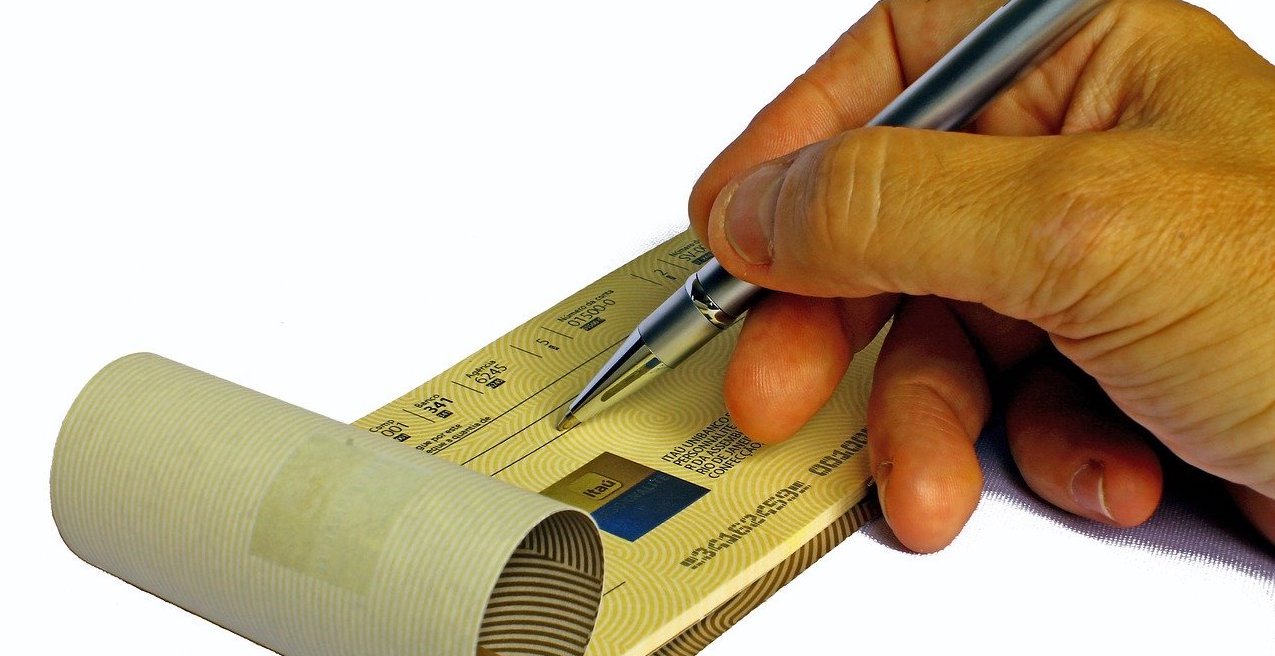
Balance transfer checks from your credit company may seem like a great way to use your credit to pay a bill where cards aren’t accepted or to consolidate your expenses into one account. But there’s a big catch.
You’ll pay a fee to use these balance transfer checks. Often, this fee is as much as five percent of the amount of the check you write.
Suppose you decide to use this check to pay your rent or mortgage. It’s a big expense, and your landlord or mortgage company may not accept remittance by card. If your bill is $1,000, you could end up shelling out an extra $50 for the convenience of using this check. And that’s not including the rate on your credit account.
Unless you truly have no other way to avoid defaulting on a bill, it’s often better to avoid using balance transfer checks – or, at least, take a close look at the small print.
When might it make sense to use balance transfer checks? If you are offered a promotional low or 0% rate, and you know what you’re getting into with fees and you have a solid plan to pay off this amount before the promotional period ends, go for it. Just make sure you’ve fully read and understood all of the terms and conditions of your card agreement first.
Otherwise, recognize that balance transfer checks are meant to bring in more revenue for the credit company, not to do you any favors. Carefully dispose of these checks. If you want to consolidate your debt, start researching other, more cost-effective ways to do it, like balance transfer cards and personal loans.
6. Minimum Payments Aren’t What They Used to Be – And It’s Not for Your Benefit
When you receive your credit bill, you’ll see two important numbers: your statement balance and your base remittance amount.
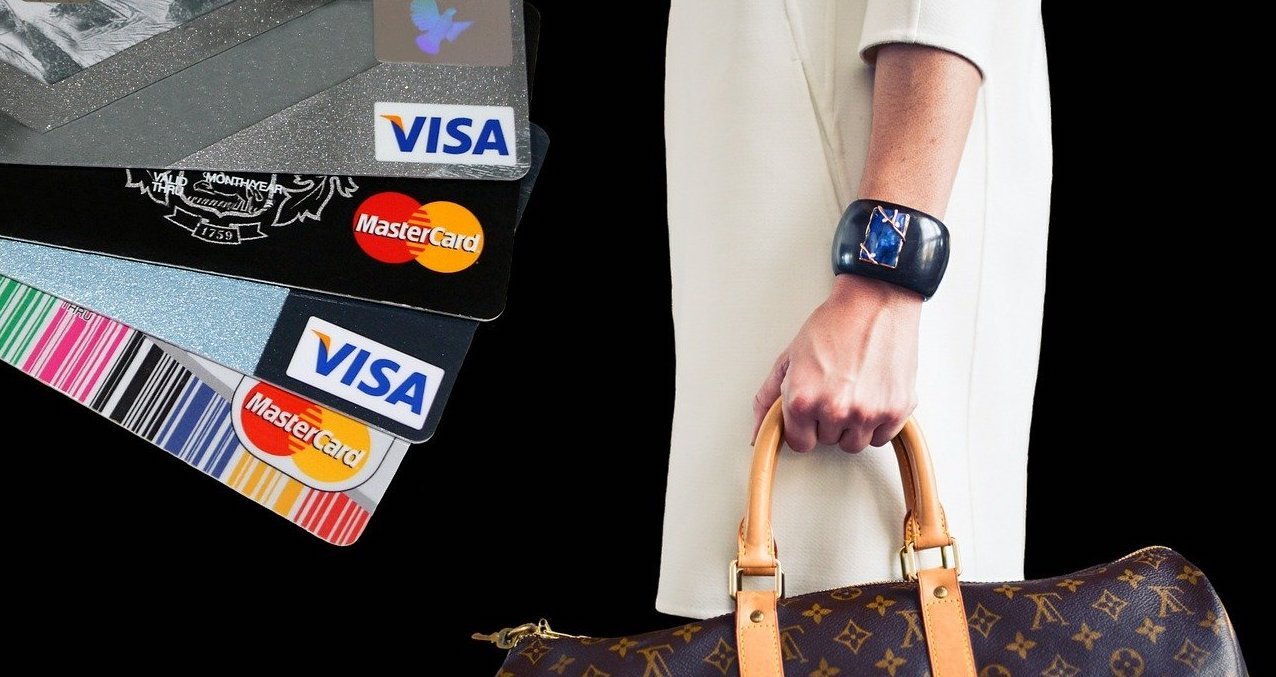
The statement balance is the full amount of what you owe for your billing period. The minimum payment amount is the smallest amount you can pay to keep your account in good standing.
If you make the base remittance on your account, you’ll avoid delinquency and late fees, but you’ll pay far more in the long run in interest charges. And, if you keep putting new charges on your card and paying only the minimum, it will be hard for you to ever get out of debt.
Issuers have lowered their base remittance amounts in recent years, but don’t mistake this practice as a courtesy to you. They did it for their own selfish reasons. Decreasing the base deposit encourages you to stay in debt longer – and pay more interest.
In recent years, card issuers have started charging base remittance amounts of just 1% or 2% of your balance, compared to the 5% base deposit percentage that used to be common. Other times, they charge flat rates as low as $20 to $25 per month.
Given that the average balance on a card in the United States was $6,200 as of early 2020, making deposits of $20 per month does little to erode your overall card debt, especially when that principle balance is racking up interest.
Consider this stunning example: if you’re carrying a $5,000 balance on a card with an 18.9% rate and you make a base remittance of just 2% ($100) each month, you’ll spend more than 30 years paying off that balance.
By the time you factor in the interest charges over all that time, you’ll have spent more than $19,500 just to finance $5,000 worth of expenses.
If you didn’t want to, or couldn’t afford to, pay off your balance faster, you would have been much better off making a base remittance in line with what the industry used to charge. If you paid 5% ($250) each month under the old practice of charging higher remittances instead of 2%, you’d end up paying off that balance in 9 years.
That’s still a long time, but the total charges would end up being around $7,200 – saving you more than $12,000 compared to what you’d pay at a 2% minimum payment rate.
Either way, making the base deposit sets you up for paying a great deal of interest, but decreasing the amount you pay by even a few percentage points can have a massive impact on your overall financial situation.
7. You’re Paying Interest on Interest
Still trying to wrap your head around how $5,000 of purchases could turn into nearly $20,000 of remittances? That’s because your credit company hasn’t filled you in on the shrewd way it calculates interest.

If you carry a card balance, no matter how small it is, you’re paying interest on top of interest… on top of interest… and so on.
Compound interest is a term that reflects this principle. Interest accrues on top of interest.
Compounding interest is a good thing when you’re investing cash because you’re making additional revenue. When the interest that’s compounding is interest you owe, you’re sinking further into debt. Either way, compound interest is a major factor in your financial picture.
Credit companies typically calculate the interest charged on your account daily. That means, for each day (outside of the grace period) that your balance goes unpaid, the interest on that balance is compounding.
On Day 1, you incur interest on your remaining balance. By Day 2, you’re now incurring interest charges on Day 1’s interest charges. And, as you can see, the power of interest compounding over months and then years can quickly grow to be many times what your original balance was.
You never want to pay compound interest if you don’t have to, especially on an account like a card, where the rate is so much higher than most other kinds of loans.
Fortunately, avoiding this trap is simple – if not always easy. Don’t buy things with your card that you couldn’t afford to pay for with cash, except in the cases of emergencies. Limit your card spending to an amount you can afford to pay off each billing cycle and be sure to pay your balance in full before your grace period ends.
8. Your Grace Period Is Shorter Than You Think
Thanks to shrinking grace periods across the credit industry, you could wind up paying interest even on purchases you pay off right away.

Your grace period is the period of time between when you make a purchase – or when your billing cycle ends – and the due date. If you pay off your balance in full during your grace period, you don’t have to worry about accruing any interest.
The thing is, grace periods have gotten shorter. Where many card companies once gave consumers 25 days to pay off their balance, they’re now more likely to have a 20-day or 21-day grace period.
Other card companies don’t offer a grace period at all. Once you begin making purchases, you can begin incurring interest right away. Credit companies aren’t legally required to offer a grace period, so they’re perfectly within their rights to do this – and, since it’s not exactly a selling point, you won’t find this practice highlighted in their marketing messages.
It’s important that you check the small print of any card account you open to understand what your grace period is – and if you even have one – before it’s too late and you’ve already begun accruing interest. You should also know that you can lose your grace period for the next billing cycle when you carry over an unpaid balance from one cycle to the next.
Keep in mind, too, that your grace period usually applies only to purchase transactions. If you accept cash advances or use one of those “free” balance transfer checks your credit company sends you, you’ll start accruing interest immediately.
9. Traveling (Or Just Shopping Online)? You Could Get Hit with a Foreign Transaction Fee
Some fees and finance charges, like the predatory practice of “double-cycle billing” that credit companies once used to charge interest even on purchases that have already been paid for, were banned by the Act in 2009. Of those that live on, the foreign transaction fee is among the ones that most often surprise consumers.

If you’re a savvy traveler, you may think to check beforehand whether your card issuer will charge you extra overseas. You may even give the creditor the courtesy of letting them know that you’re traveling, so your card won’t be declined when it shows up that you’re making a purchase far from home.
But if you’re an infrequent traveler, odds are that the possibility of foreign transaction fees might not even cross your mind.
And, in the advent of online shopping, you don’t even have to be traveling internationally to encounter an international merchant. A purchase you make from your living room could trigger a foreign transaction fee.
Foreign transaction fees are often charged as a percentage, usually around 3% of your transaction cost. If you rack up these fees every time you swipe your card abroad, it could add up to a pretty high cost at the end of a trip (or online shipping spree).
If you want to avoid foreign transaction fees, make a point to check with your card company about whether or not you’ll be charged these fees. If possible, get confirmation in writing that your card doesn’t have foreign transaction fees, and examine the tiny print of your card agreement to make sure.
10. You Want to Be a “Deadbeat”
Most of us think of a “deadbeat” as someone who doesn’t pay up, but in the credit industry, it’s the opposite.
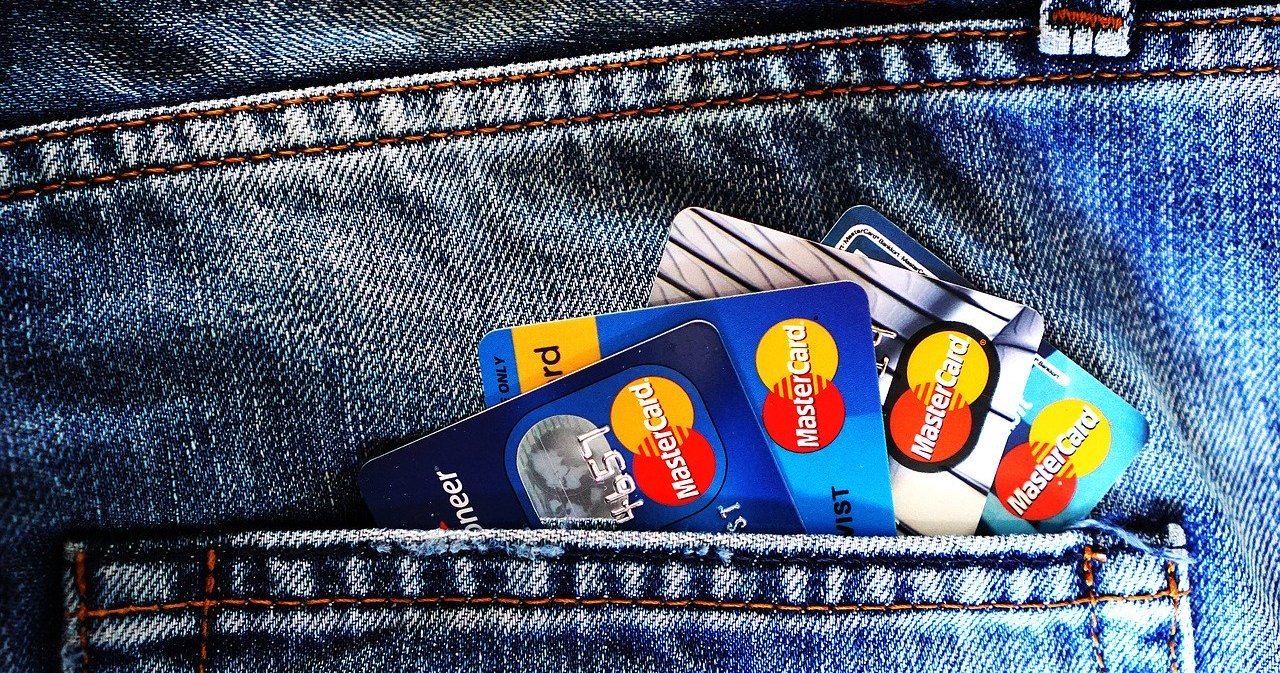
Credit companies make their revenue off of what they call “revolvers.” Revolvers are consumers who carry a revolving balance on their cards, month after month, and – here’s the important part – make interest deposits on that continuous balance.
You’re a revolver if you make a purchase and pay it off over more than one billing cycle but continue to make further purchases. Whether you make the base settlements or more, you don’t pay off the balance in full, so you’re still subject to interest charges that go straight to the card company’s bottom line.
And guess what? Card companies love you for this. Revolvers are the cardholders who bring in the most revenue.
If, on the other hand, you’re paying off your balance in full each month – within the grace period – you don’t pay interest charges at all. You’re what the card company calls a “transactor” or, less politely, a “deadbeat.”
See, the credit company is lending you cash and getting little in return. You’re not paying interest. You’re not paying late fees. Ideally (for you, not the card company), you’re not paying an annual fee, either. And that means you’re not bringing revenue into the credit company’s coffers.
In fact, if you use your credit to rack up rewards and you don’t make interest charges, you’re clearly the one benefitting from this arrangement, building credit history and getting free rewards while paying nothing to use the cash lent to you.
Being a deadbeat may not be a compliment in most contexts, but if your credit company thinks you are one, you’re doing something right.
11. Your Credit Score Doesn’t Take a Hit When You Pay off Card Debt, but Your Card Company Won’t Tell You So
Credit is a funny thing. You might think having no debt would be more attractive to a creditor than having outstanding debt, but a lack of credit history isn’t in your favor.

If anything, a blank slate makes creditors less likely to offer you credit, whether in the form of a charge card account or a loan. You need to start building credit so that you can be deemed creditworthy when you go to apply for financing to purchase a house, buy a car or pursue your business dreams.
Because of this somewhat confusing situation, many consumers are tricked into thinking that keeping a balance on their card is a good thing and that paying off that balance will actually hurt them.
Credit companies benefit from this myth, because even though it’s not true that having open accounts without a balance will hurt your credit, people who believe this will maintain a balance and unnecessarily make interest remittances on the charges.
The reality is that you don’t need to have a balance to build credit. In fact, having too many accounts with balances, or too high of a balance in relation to your limit, can lower your credit score.
An even better way to build credit is to use your card regularly to make the same purchases you would make if you didn’t have a card and then pay off your balance in full each month. Future lenders want to see that you can be responsible with credit, that you will make your deposits on time and that you’re not spending more than you can afford to repay.
If you pay off your charges within the grace period, then you build a credit history without wasting cash on interest remittances.
12. Not Understanding Introductory or Promotional Offers Could Cost You Big-Time
Many cardholders only open an account in the first place because the card company promotes an introductory offer too good to pass up. Maybe you’re offered a cashback bonus, extra airline miles, a gift card just to sign up, or a store discount.
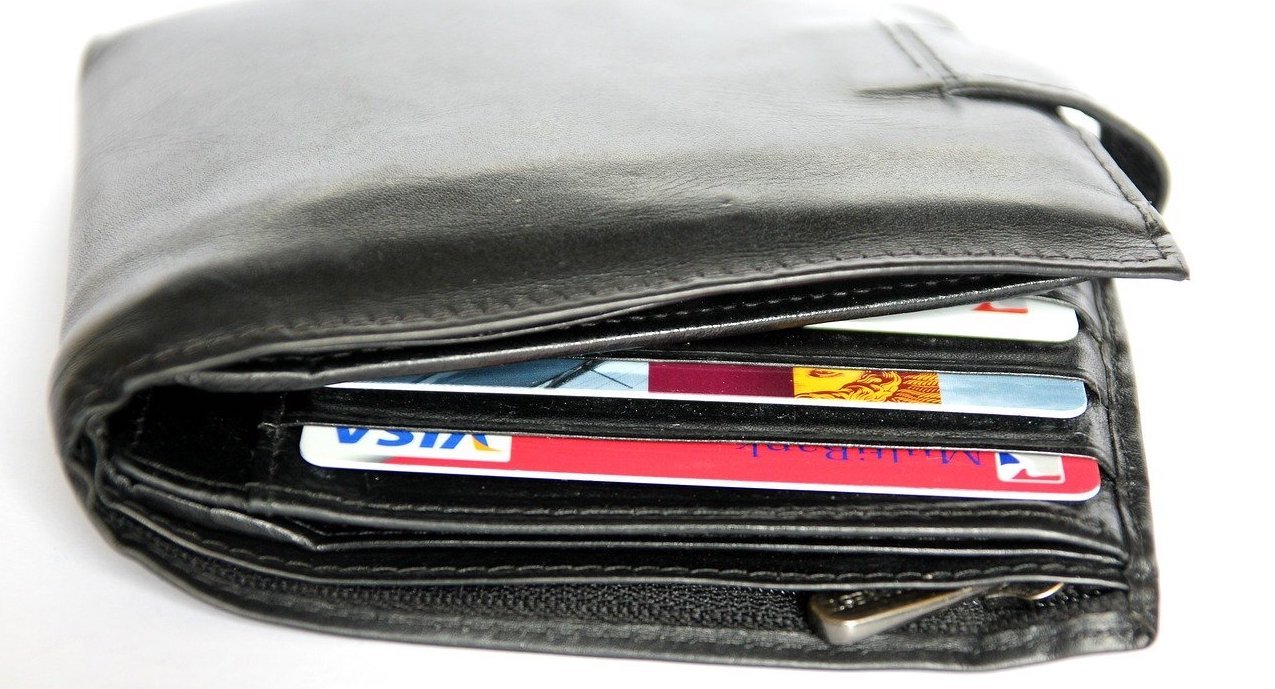
Whatever the offer, you need to be fully aware of the strings attached, or the promotion could turn out not to be such a great deal after all.
For one thing, these promotional bonuses usually aren’t automatic. You need to do something – like spend a certain amount of cash in a certain amount of time – to activate them. Make sure you understand your obligations, or you might be disappointed.
The bigger issue, though, is when the promotional offer has to do with the card’s rate or annual fee. Some “no annual fee” cards are really “no first-year fee” cards. Unless you look carefully through the tiny print and the terms and conditions, you may not find this out until you get hit with an annual fee – which can often add up to $100 or more.
Is it ever worth paying an annual fee for a card? It can be, but you need to weigh the costs against the realistic benefits. If you don’t have good credit and need to improve your credit score, or if you don’t have a bank at all, you might not have many options for cards that don’t require an annual fee.
This decision becomes a little more complicated when the reason you want the pay-to-play card is for the rewards it offers. It’s important to look at precisely what you’re getting out of the card and how it will fit into your lifestyle and spending habits.
Some cards offer extra points on certain types of spending, from travel to groceries, which can be tempting if you spend a good portion of your budget on those expenses (and pay or plan to pay by card).
The question is, can you reasonably expect to get back in rewards substantially more than you will pay to have the card?
You should know that even a card that purports to offer great benefits and rewards may not be worth the annual fee you’ll pay to have it. The vast majority of airline miles – the most notorious of card rewards and vouchers – are never even used, and there are often significant strings attached to these rewards, such as blackout dates.
And, when it comes to cashback offers or other rewards points, a point often adds up to no more than one cent per dollar you spend. If you get one point per dollar you spend and your annual fee is $100, you’ll need to put $10,000 on your card over the course of the year just to break even – and that’s assuming you don’t pay any interest at any point throughout the year.
13. Don’t Be Fooled by 0% Financing Offers, or You Could End up Owing a Lot More Money
One particularly appealing offer is a card with 0% financing. Often offered by retailers in addition to national banks, these 0% financing promotions can save you a lot of cash if you’re making a big purchase, like furniture or expensive electronics – but only if you use the offer correctly.

A card that claims to be 0% interest sometimes has a critical deadline buried in its small print. Rather than being truly “interest-free,” some of these offers are “deferred interest” promotions.
What’s the difference? Zero-interest means what it sounds like – over the course of the promotional period, no interest is calculated on the balance. Deferred interest means that your interest is calculated throughout the promotional period. It’s just not charged at the time it accrues.
In deferred interest financing, you must pay off the balance in full by the end of the promotional period. Otherwise, you’re on the hook for the interest on the entire purchase, not just on the balance remaining at the end of the promotional financing period. All that interest that was calculated and deferred comes back to haunt you.
That’s very different from what happens at the end of a truly zero-interest promotional period, in which you’ll only pay interest on the amount of the balance that remains.
Not paying off your purchase in time isn’t the only way a 0% financing offer could go south. You might also incur penalties that void the 0% offer if you miss a deposit, make a late settlement or fail to make the minimum deposit required at any point during the promotional period.
Not understanding your 0% financing offer could come back to bite you. Interest rates on these credit lines routinely rise to 25% or more. You may think you’re stretching out the cost of a big-ticket purchase for free but then end up paying hundreds of dollars in interest charges.
14. You Can Be Penalized Twice for One Late Remittance
No matter how hard you try to make the right financial moves, life can sometimes get in the way. If an abrupt financial struggle caused you to miss a remittance deadline, here’s what you need to worry about.

The first consequence you’ll face is a late fee. A late fee is a one-time penalty because you paid late. You’ll get charged up to $35 for this one-time lapse.
If your settlement is more than a little late – generally, 60 days or more – you might get hit with a second penalty that is likely to hurt even more. The credit company may hike up your APR – not only on your existing balance but also on your future purchases.
Don’t be surprised if your new APR after a late remittance is as high as 29.99% – and those interest charges can add up fast, and in no time, you have the highest interest rate. You need to pay off the balance at this new, high rate as soon as possible. Be sure to pay your balance on time and in full in the months that follow, or you’ll owe a lot more in interest.
15. Paying One Card Late Could Affect Every Line of Credit You Have
Pay one card late, and all of your creditors can penalize you. Under what’s known as the universal default clause, defaulting on a loan or line of credit anywhere can result in consequences everywhere you have an open line of credit.

Prior to the passage of the Act, credit card companies would use the clauses hidden in the fine print of their contracts to raise cardholders’ APR rates. The rationale for this brutal practice was that a consumer who defaulted on one card, loan or bill was a bigger nonpayment risk in the future.
But to cardholders who were already going through a tough financial time, it felt a lot like kicking them while they were down. Suddenly, not one but all of their interest rates had climbed, sometimes retroactively – and right when they most needed the cash to make up their missed remittance.
Universal default penalties is another practice the Act aimed at in 2009. The legislation limits how creditors can penalize a cardholder for their delinquency on other accounts with other institutions, but – unlike practices like double-cycle billing – it hasn’t banned this practice entirely.
That’s because, while credit card companies can no longer retroactively raise your rates on your current balance because of your delinquency with other lenders, they can opt to stop doing business with you if they think you’re a big enough nonpayment risk.
And, since they also have the right to raise even a fixed rate as long as they provide enough notice to meet legal requirements, card companies with whom you haven’t defaulted may decide to raise your rates for future transactions.
Federal regulations now offer some protection from the worst of the default practices. However, it’s still crucial that you avoid defaulting on your accounts with any creditor, if at all possible, so that you don’t face penalties from every creditor.
16. There’s a Time Limit on Penalty Apr Hikes
It may sound like a lot of doom and gloom, but there is good news if you’ve been hit with a penalty interest rate. Under the Act of 2009, credit card companies can only raise your rate for a limited time, not forever.

You can reverse your penalty rate by making all of your remittances on time for at least six consecutive months. Once you’ve done this, your credit card company is supposed to change your rate back to what it was before the penalty interest rate kicked in.
This rule doesn’t benefit your credit company, so don’t be surprised if this is one secret your creditor isn’t eager to share with you. Know your rights and keep track of your deposits following the late payment.
If six months of on-time remittances go by but your credit company doesn’t change your rate back on its own, remind them that it’s the law.
17. Even if Your Bill Goes Into Collections, You Can’t Be Harassed
If you’re not able to get your finances back on track, that one missed deposit could progress a lot further.

You want to avoid letting card debt go into collections, but that is, sometimes, what happens. If your credit bill is in collections, you need to know that the debt collectors aren’t allowed to harass you.
They can’t threaten you. They can’t even use abusive language toward you. If they do, you can report them to the Federal Trade Commission.
Consumers still have legal rights, even when their debts are in default. The Fair Debt Collection Practices Act, passed in 1977 and amended in 2010, establishes the unfair debt collection practices that are against the law, including calling at unreasonable hours, repeated calling, and misrepresenting your legal rights when pursuing remittances from you.
The credit company may not be the one actively seeking remittance from you by this point, but your creditor still wants its settlement – complete with all the interest. When your credit company notifies you that your debt has been turned over to collections, you may not hear about your rights as a consumer.
Your creditor won’t be particularly bothered if you unnecessarily fear that a debt collector will harass and threaten your family or if the collection company does, in fact, violate your rights.
18. Your Card Company Doesn’t Have to Work With You in a Debt Settlement Plan
For consumers in major debt, turning to a debt settlement company for help may seem like the best possible solution. You hear their offers to negotiate your debt down to a more manageable amount – for a price, of course – and think that could be the answer to your card troubles.

First, you need to do your homework. Debt settlement companies can be expensive to work with and leave your finances in a worse state than when you started.
You could go through this ordeal, potentially dragging your credit score down even more in the process, only to find that your credit company refuses to work with your debt settlement company, anyway. A creditor isn’t required to negotiate debts or to agree to work with a debt settlement company.
In most instances, a debt settlement or debt relief company isn’t really your best option.
The federal Consumer Finance Protection Bureau urges consumers to consider working instead with a nonprofit credit counselor or, if attempting to settle their debt, to negotiate directly with the credit company themselves, while continuing to make payments.
Credit companies may prefer to get some amount paid back than none, which is what they would likely receive during the time a third-party debt settlement company was handling and attempting to negotiate your debt.
19. It’s Not as Easy to Get Rid of Card Debt by Declaring Bankruptcy as It Used to Be
Let’s say the worst-case scenario happens. For whatever reason – the loss of a job, steep medical bills, or some other unexpected financial hardship – you become burdened by so much debt that you just can’t pay it all.

Once upon a time, if you got in over your head with card debt, you could declare Chapter 7 bankruptcy and get much of this debt liquidated, or discharged.
The process was far from painless. It would do a number on your credit, seriously impacting your borrowing opportunities for the foreseeable future.
For consumers fresh out of bankruptcy, it would often be difficult to, say, buy a home or even get a landlord to rent you a place to live. You may need to sell or surrender the assets you have to pay some of your debts.
For individuals, dealing with debt is never as easy as “just” declaring bankruptcy. But, for people in dire financial situations, a Chapter 7 bankruptcy was a last resort for getting out from under crushing debt.
Once the bankruptcy process was completed, you would no longer be pursued by debt collectors or be subject to a repayment plan, generally – although you may still be accountable for paying some outstanding debts.
Since the Bankruptcy Abuse Prevention and Consumer Protection Act (BAPCPA) passed in 2005, this lifeline has gotten a lot harder to use. Despite the phrase “consumer protection” in the name, it was the banking industry that lobbied to get this bill passed, spending upwards of $100 million on the effort.
The law made it more difficult for consumers to qualify for Chapter 7 bankruptcy. Instead, you would have to declare Chapter 13 bankruptcy, which reorganizes your debt into a settlement plan typically spread over three to five years.
Under Chapter 13 bankruptcy, you’ll continue to spend the next few years, at least, weighed down by this debt, and that makes it a lot harder to start over and make better financial moves.
If this sounds like a win for the card companies and a loss for American consumers who are in over their heads, you’re on the right track.
Research published in the American Bankruptcy Law Journal reported that, while the law did reduce the number of bankruptcies and slashed the losses reported by card companies, positioning them to rake in record profits, it didn’t quite result in “consumer protection.”
In fact, the consumer cost of card debt grew in the aftermath of this law’s passage.
20. You’re in Charge – Even if You Don’t Realize It
With all of these secrets and sly tactics to make this massive trillion-dollar industry profitable, you might assume that the credit companies are the ones with all the power.

But there’s one more secret they don’t want you to know: you’re their boss, not the other way around. You’ve got a lot more power than you think you do – especially when you’ve made smart financial decisions with your credit.
Credit companies set the terms – the interest rate, the APR, the fees – but in reality, they only make revenue from your business. And, just like any other type of company, a consumer can choose to take their business elsewhere. You’re the one in charge of who you accept credit from.
Of course, when you already owe money, it’s not as easy as simply walking away. You’ve still got a balance to pay off. However, if you consistently make at least the base remittance on time – even, or especially, if you carry a balance – chances are good that your credit company won’t want to lose your business to a competitor.
This works in your favor, because you can try to negotiate better terms with the credit company. Want a lower interest rate? A higher credit limit? An annual fee waived? It never hurts to ask. The worst that can happen is that your credit company says no.
When negotiating with your credit company, be polite. After all, a credit company representative is much more likely to work with you if you’re friendly than if you frustrate them.
At the same time, you also need to be assertive. Remind the representative of how long you have been a loyal cardholder and your excellent history of paying your bill on time (only if it’s true, though).
Suppose you have a specific offer from a competing company. In that case, that information may give you some leverage, and your credit company may be willing to match or beat the competitor’s offer to keep your business.
Just be sure you don’t threaten to “fire” a credit company if you can’t afford to go through with it – if, for example, your credit is such that you can’t get a credit line from someone else if you need it.
Otherwise, if you find that your credit company isn’t meeting your needs, start looking for other credit options that are a better fit for you.
The most informed cardholders know what they want (rewards, a grace period and a low APR) and what they don’t want (annual fees, foreign transaction fees and variable rates) in a card and they wield it carefully to build their credit without doing more financial harm than good.
21. You Don’t Want to Get Caught up in a Rate Trap
As mentioned earlier, when it comes to interest rates, your credit company can’t increase your rates in the first year. When they finally can, you must be given a 45 day notice, which is enough time to cancel the card. Note that new rates can only be applied to new purchases, not your existing balance.
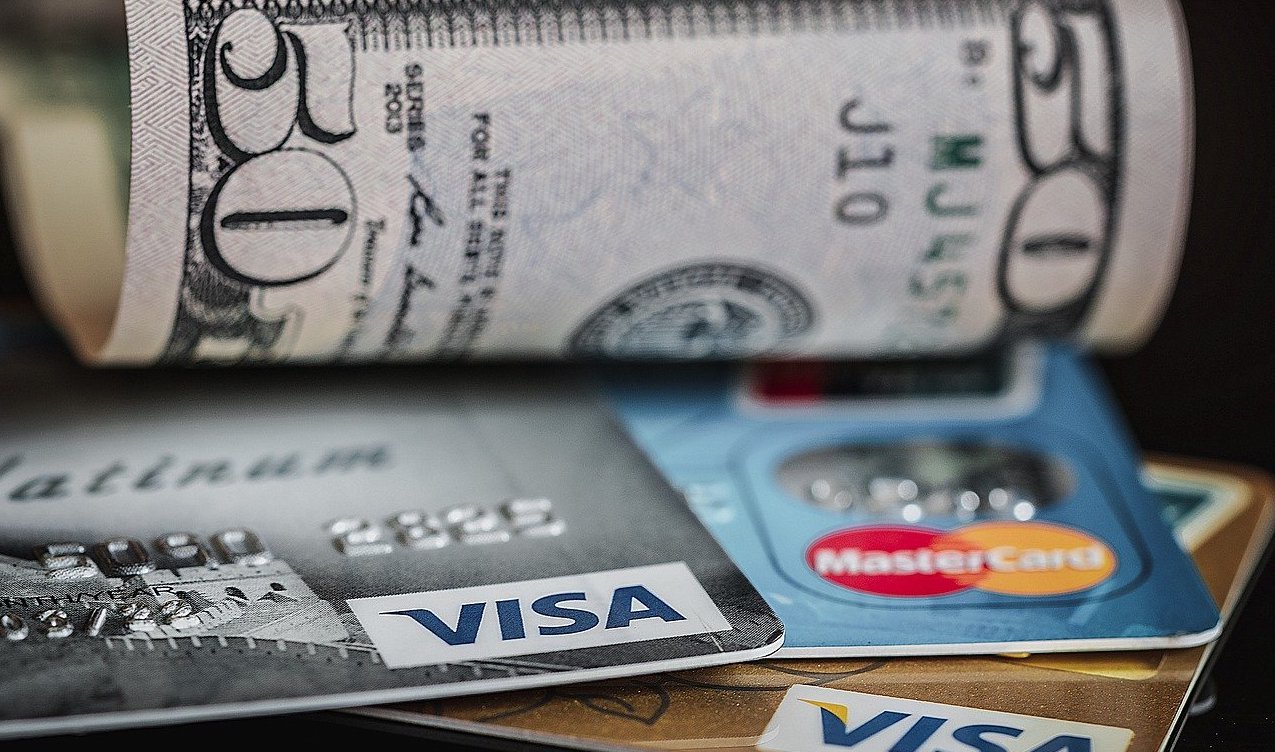
However, that last rule does have a loophole, which I like to call the late settlement rate trap. If you have an outstanding remittance that is more than 60 days late, your credit company can charge you a higher interest rate both on your existing balance and on the new charges.
The worst part of it is that there is no limit to the penalty rate; it can go as high as they want.
Another rate trap you want to avoid is the discount rate trap. For cards that come with very high interest rates, -as high as 30%- your card issuer may tell you that you qualify for a discount rate of say 15%.
While this sounds mouthwatering, you need to be very careful, as you could easily get trapped.
The moment you delay on one single deposit, your credit company has the right to take away the discount you were offered, leaving you stuck with the initial rate.
This can be done with no 45-day notice, because they are only taking your discount away, and not raising your interest rate.
Card Secrets Revealed
When it comes to personal finance, knowledge really is power. By keeping these rights, responsibilities, risks and consequences a secret, credit companies can more easily manipulate consumers into paying more for their credit.
Unfortunately, that can sometimes mean depleting your savings and even leading you into bankruptcy.
The astonishing impact of compound interest, of dropping the base remittance by a mere few percentage points or of hiking up the APR of one card (or all of them) over a late payment, proves that every “little” secret in the credit industry is a big deal.
Realistically, you can’t live a full financial life without ever having a card. Credit lines are valuable for building a credit history and maintaining excellent credit, for reaping rewards and for an immediate source of funding in case of an emergency.
The goal shouldn’t be to avoid using cards but to use them wisely and to be a fully informed cardholder – even if the card company prefers to keep its secrets.
